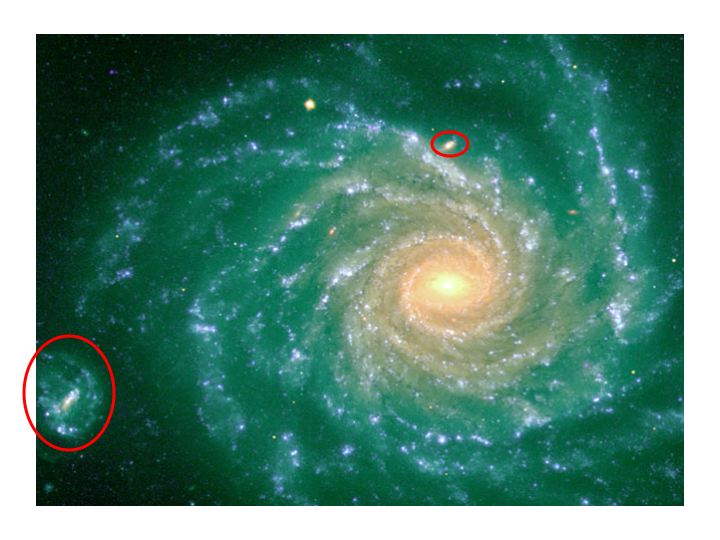|
|
||
 Credit: FORS1, 8.2-meter VLT Antu,ESO |
||
|
pic of the day Links:
Society for
|
Jul 14, 2004 If redshift is the effect of an expanding universe, it must be related to distance. Yet three galaxies with very different redshifts are the same distance from Earth. Astronomer Halton Arp studied this galaxy, NGC 1232, in 1982. He called it "one of those rare and thrilling moments when you can look down a long corridor into the future." What he saw was three galaxies with three very different redshifts. The primary galaxy has a redshift of z = .005. Its first companion (left side of photo) has a redshift of z = .021. The tiny companion on the upper arm has a redshift of z = .1. Arp was sure that these three galaxies are next-door neighbors. The small galaxy on the left is the archetypal "companion galaxy," not the type observed as an independent galaxy. Its star-forming regions and gas clouds are similar in scale to those of the large galaxy, and the influence of the small galaxy can be traced in disturbances along the larger galaxy's arms. Arp's Catalogue of Discordant Redshift Associations presents similar in-depth documentation that the tiny knot on the upper arm is also a galaxy connected to NGC 1232. Why were these observations so thrilling? They directly contradict the assumption upon which big bang cosmology is based. Because redshift is interpreted as an effect of the expansion of the universe, it must be related to distance. Yet here are three galaxies with very different redshifts that are at the same distance. The astronomical community responded by dismissing his evidence and taking away his telescope time. But in the years since he made these observations, Arp has added hundreds of similar discordant associations to his collection. These associations will change our view of the distribution of galaxies, their ages, and the size of the "known" universe. And that will require a new theory of cosmology. |
|
|
Copyright 2004: thunderbolts.info |
||
